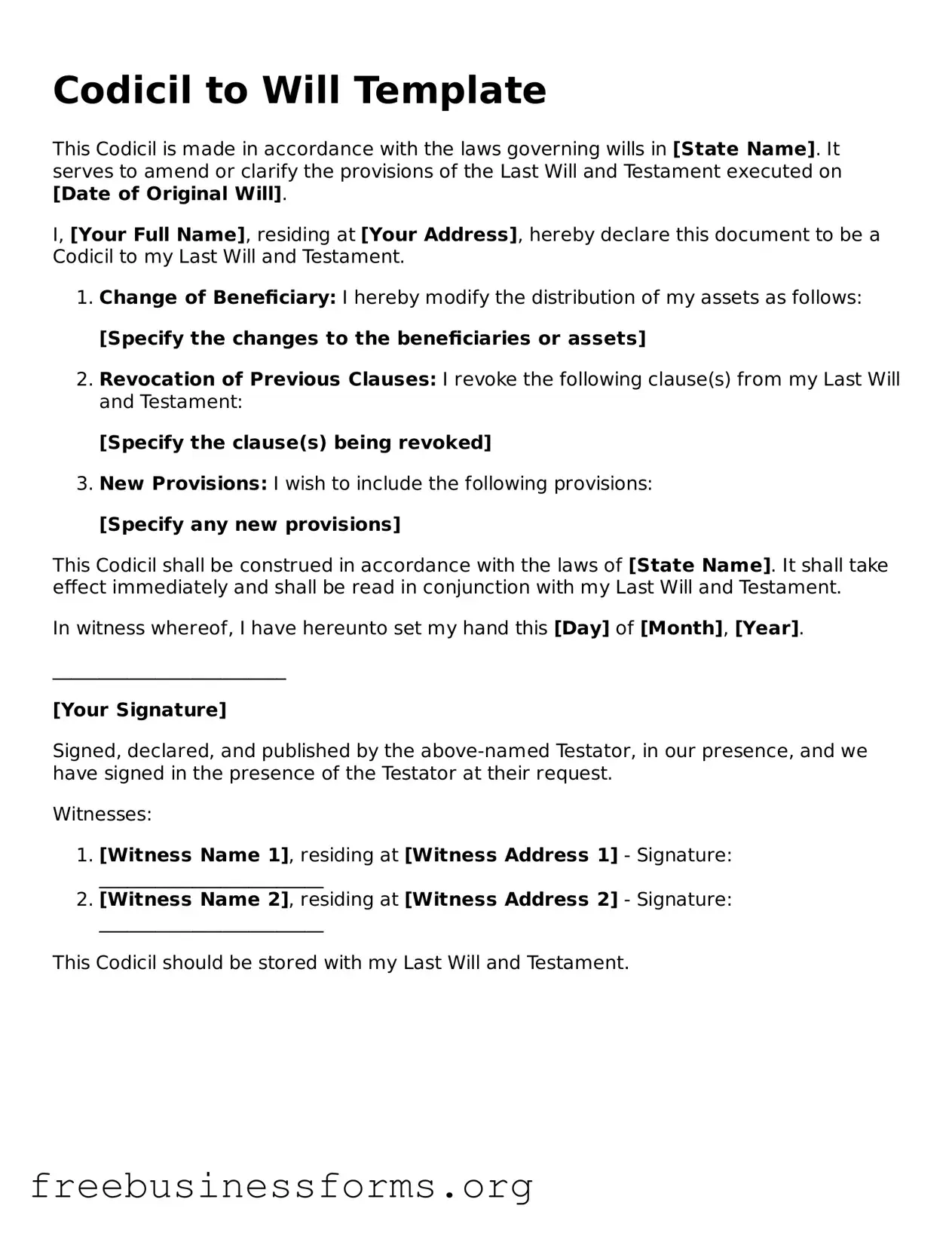Codicil to Will Template
This Codicil is made in accordance with the laws governing wills in [State Name]. It serves to amend or clarify the provisions of the Last Will and Testament executed on [Date of Original Will].
I, [Your Full Name], residing at [Your Address], hereby declare this document to be a Codicil to my Last Will and Testament.
- Change of Beneficiary: I hereby modify the distribution of my assets as follows:
[Specify the changes to the beneficiaries or assets]
- Revocation of Previous Clauses: I revoke the following clause(s) from my Last Will and Testament:
[Specify the clause(s) being revoked]
- New Provisions: I wish to include the following provisions:
[Specify any new provisions]
This Codicil shall be construed in accordance with the laws of [State Name]. It shall take effect immediately and shall be read in conjunction with my Last Will and Testament.
In witness whereof, I have hereunto set my hand this [Day] of [Month], [Year].
_________________________
[Your Signature]
Signed, declared, and published by the above-named Testator, in our presence, and we have signed in the presence of the Testator at their request.
Witnesses:
- [Witness Name 1], residing at [Witness Address 1] - Signature: ________________________
- [Witness Name 2], residing at [Witness Address 2] - Signature: ________________________
This Codicil should be stored with my Last Will and Testament.
